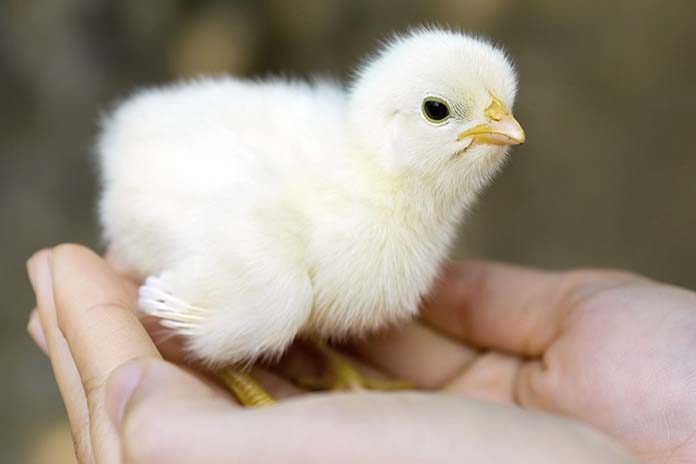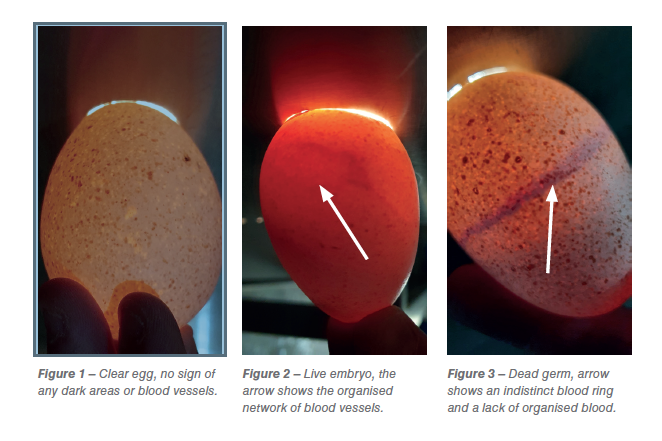
Measuring the level of fertility of any batch of eggs is a key factor in hatcheries. Fertility testing may be necessary in order to determine the presence of some embryos that have died early in incubation, of cracked eggs and contaminated eggs.
Measuring the level of fertility of any batch of eggs is an important task for several reasons:
- to determine whether any hatch problems are due to poor fertility;
- to monitor the performance of the artificial insemination crew on the farm and to allow remedial action to take place when fertility declines;
- if fertility is low (< 90%) then removing the infertile eggs from the incubator can reduce the problem of cool spots within the machine.
Fertility testing can also be used to detect the presence of embryos that have died early in incubation, cracked eggs and contaminated eggs.

Procedures
Shining a strong light (candling) through the egg after 7 days of incubation can assess fertility:
- an infertile egg will be seen as luminescent when candled, or clear (Figure 1);
- a fertile egg will appear dark with noticeable blood vessels near the air cell (Figure 2);
- with some candling systems it is possible to detect embryos that have died in the first few days of incubation – early dead germs. Early dead germs can be identified by the lack of structured blood vessels near the air cell (Figure 3);
- a very large air cell normally indicates that the egg is cracked.
Several manufacturers can supply suitable equipment for candling, ranging from hand held lamps for testing each egg individually through to fully automated machines testing whole egg trays at a time. Hand-held candling systems are slower and require more labour but also tend to be more accurate.
Fertility testing is normally done at 10–14 days of incubation or at 25 day transfer. The advantage of doing an early fertility test is that a fertility problem is identified more rapidly and allows action to be taken on the farm more quickly. The disadvantage of doing an early fertility test is that it is an extra handling procedure in the hatchery.
A compromise solution can be to do a sample fertility test at 1–14 days of 10% of the eggs incubated from each flock and then do a 100% of the eggs at transfer. If doing a sample test on each flock, ensure that the sample is representative of the whole batch of eggs and that a minimum of 1,000 eggs is tested.
Although it is not necessary to remove infertile and early dead germs from the trays at fertility testing, it is recommended if the fertility drops below 90%. If there are too many infertile eggs left on the trays this may result in localised cooling.
Interpretation
It should be noted that eggs identified as clear at candling may not necessarily be infertile, but could be very early embryo mortality. The candling lamp is not normally able to distinguish between infertile and embryos that died in the first 2–3 days of incubation.
Typically in a good hatching flock, a third of clear eggs are found to contain very early dead embryos when opened. If fertility is a problem, then the proportion of infertile in the clear eggs will increase and the opposite is true if there is an early dead germ problem. It is important that good records are kept of fertility data and that laying farms are quickly informed of fertility results.

















